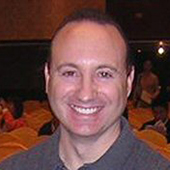Communicate Simply
Admit it. Ours can be an insular profession. As much as most of us think we communicate simply and effectively, we often don’t. Why? I think it’s because we’re sometimes overly concerned about how we’re coming across to our fellow UXers. You know what? Forget about them. Your real audience is the business stakeholder. When you’re planning a presentation or trying to figure out how to communicate your research or design solution, don’t let your inner Nielsen—or head-Nielsen for fans of the reimagined Battlestar Galactica![]() TV series—prevent you from communicating in terms and concepts that your stakeholders can understand and groove on.
TV series—prevent you from communicating in terms and concepts that your stakeholders can understand and groove on.
You know what this means, don’t you? You’re not allowed to use the term heuristic evaluation anymore. Banish it from your professional vocabulary! Now, wave goodbye to it, because, if you use it again, I will personally come to your house and punch you in the arm.
Whether you’re reporting research results, writing a research plan, showing off a new design, or drafting a specification, keep it simple. Communicate your key points efficiently and using minimal jargon.
Read, Read, Read
I know keeping up with all there is to read is hard for all but the most inveterate readers in our crowd. But it’s important that you keep up to date with the latest news about design, user experience, usability, product management, technology, mobility, and more. My advice is to get yourself an RSS reader—Web-based or desktop, whatever works for you—and bookmark and tag relentlessly. Don’t worry, you don’t have to keep track of what you’re bookmarking and tagging—yet.
After a few weeks, once you’ve built up a nice backlog of reading, I want you to schedule some me-time for yourself. At least once a month, reserve some time for an hour of strolling through your bookmarks and tags, reviewing what you’ve filed away. Open up a notepad—either a virtual notepad or a real one—and just crank out a raw dump of the main takeaways from each article. If you’re doing it electronically, don’t forget to note the sources of your takeaways. Just grab the URL and paste it beneath them.
I promise, if you do this for 3 or 4 months, you’ll get smarter and be a better UX practitioner—or manager, VP, or whatever. And don’t forget to share your gleanings. Not only is this a good way to consolidate your knowledge, it’s a good way to spark discussions in your professional community. It’s an even-money bet that, pretty soon, you’ll find yourself becoming the proverbial font of knowledge that people rely on for user experience expertise.
Pick a New UX Tool and Experiment with It
You want to grow in your practice? Download or browse to a new tool and play around with it. You may not put it into regular rotation, but it’ll get you thinking and looking at your practice a bit differently. And who knows, you might find that 10X-efficiency-booster application that works just the way you think about design, IA, user research, or usability.
Here’s a good place to start: Check out Russell Wilson’s 2008 article “16 Prototyping Tools Reviewed.”![]() And give the comments a read, too. There’s good stuff there.
And give the comments a read, too. There’s good stuff there.

